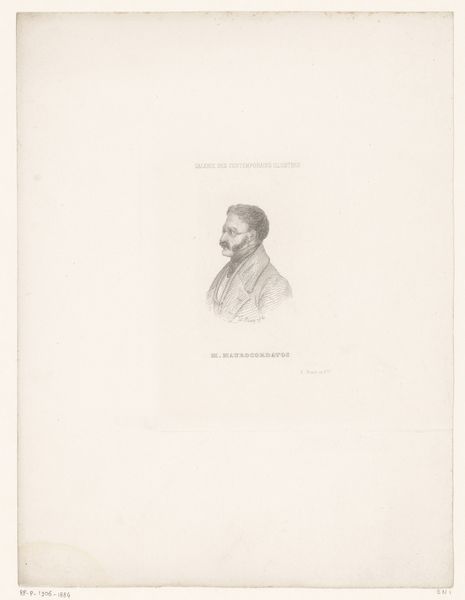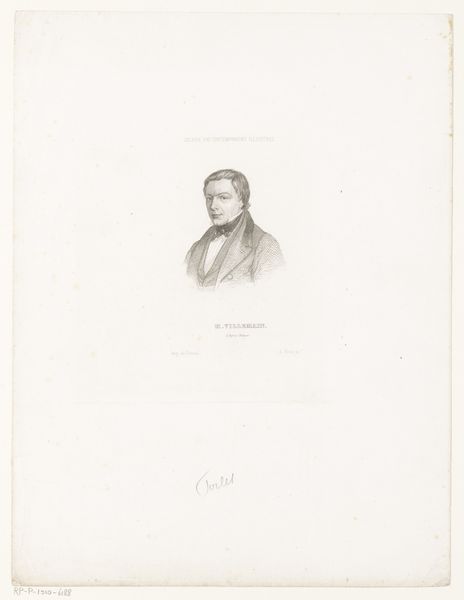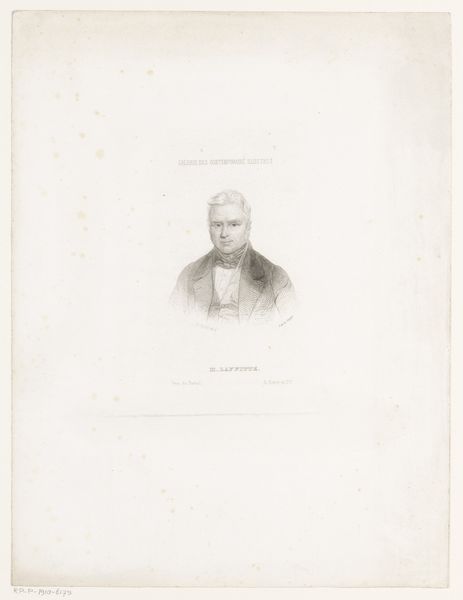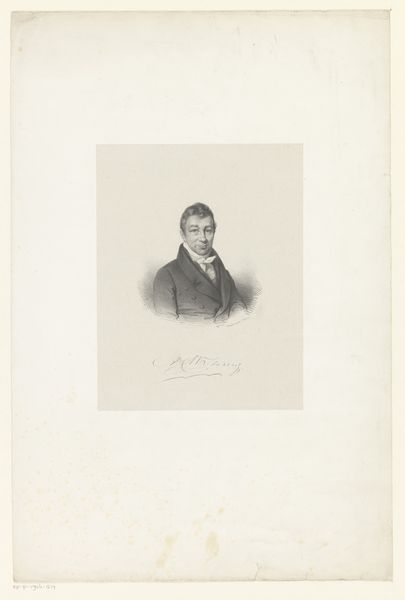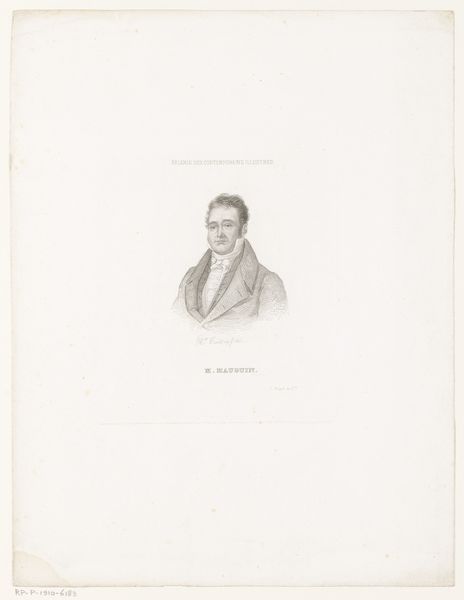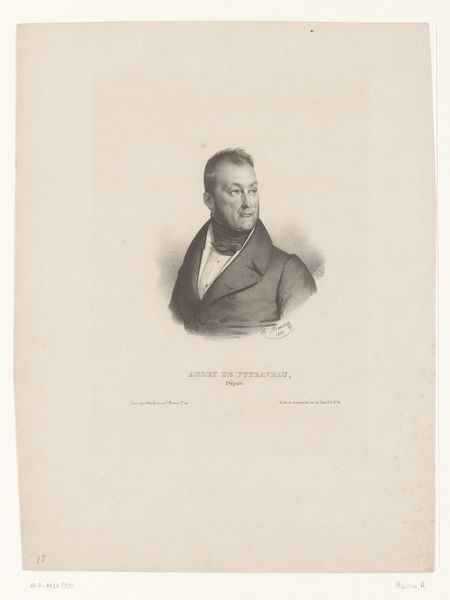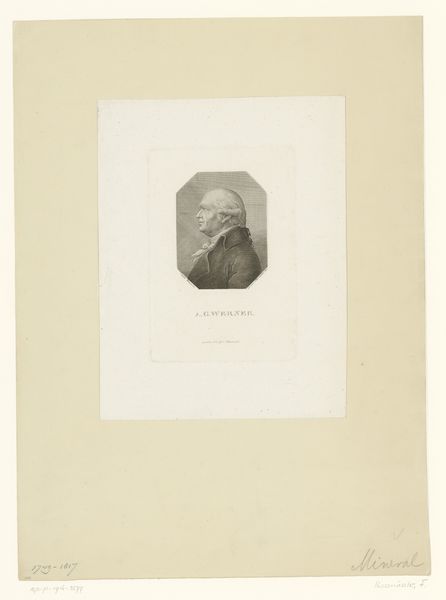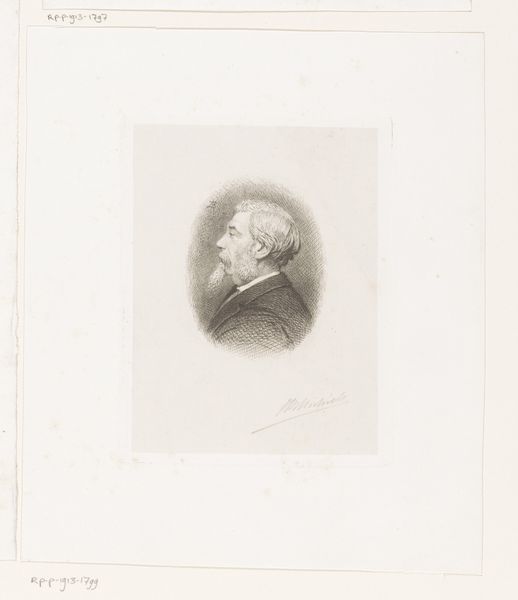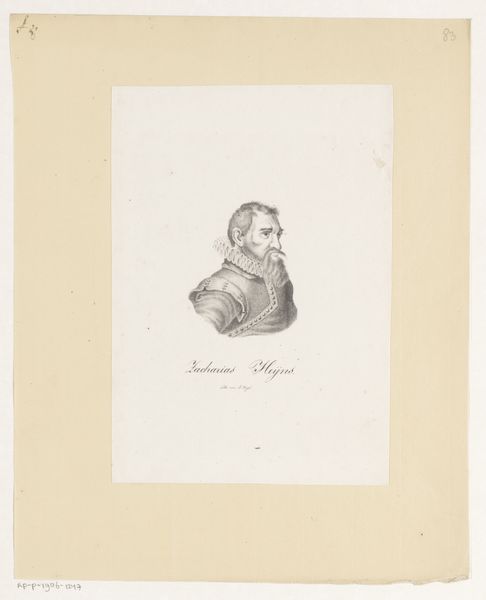
drawing, print, graphite
#
portrait
#
pencil drawn
#
drawing
#
light pencil work
# print
#
pencil sketch
#
light coloured
#
old engraving style
#
white palette
#
romanticism
#
graphite
#
pencil work
#
history-painting
#
academic-art
Dimensions: height 318 mm, width 244 mm
Copyright: Rijks Museum: Open Domain
Curator: Today, we're looking at Adolphe Torlet’s "Portret van André Marie Jean Jacques Dupin," created around 1844. What’s your initial impression? Editor: A stark profile rendered with exquisite delicacy. The limited tonal range creates an air of severity, doesn't it? There's almost an etching-like precision in the hatching. Curator: It captures Dupin at a significant moment in his career. Remember, he was a leading French lawyer and politician, a key figure in the July Monarchy. This portrait encapsulates the bourgeois power and patriarchal authority that period embodied. Editor: Yes, the meticulous details of his attire—the jacket's lapel, the carefully rendered cravat—speak volumes about status and self-presentation. Notice how the artist uses subtle variations in pressure to suggest volume and texture with only graphite. Curator: Indeed. Consider, too, Dupin's role in shaping legal frameworks that, while ostensibly neutral, often served to maintain existing social hierarchies and suppress dissent. That gaze has a definite intensity and hints at someone acutely aware of his power. Editor: Certainly. The precision enhances this mood, I think. The artist masterfully portrays the set of his jawline and that very direct gaze. Curator: The almost ethereal quality comes through despite the air of seriousness in Dupin’s stance. Editor: A superb observation! I was struck by how the use of line, devoid of vibrant color or bold contrast, creates an image of considerable presence and weight nonetheless. Curator: This rendering offers a potent symbol of how power was visually constructed and circulated in 19th-century France. I see in it questions regarding legal history, political influence, and masculine identity, don't you think? Editor: Absolutely. Looking closely at how Torlet utilizes the materials, however minimally, to evoke such a presence makes me appreciate his skill. Curator: Considering these observations about technique and sociohistorical background only enriches the portrait, for me. Editor: Indeed, Adolphe Torlet certainly leaves us much to think about from both standpoints.
Comments
No comments
Be the first to comment and join the conversation on the ultimate creative platform.

